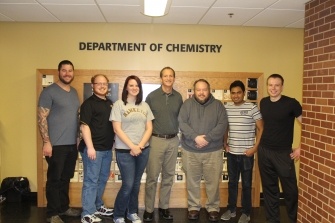
Gloer Research Group
Natural products continue to be among the most important therapeutic agents and lead compounds in medicine, and have been particularly instrumental in the development of effective therapies for cancer and infectious disease. As of 2013, 63% of all anti-cancer drugs were either natural products, or were derived directly or indirectly from natural product leads. If synthetic compounds based on natural-product templates are included, the number rises to nearly 80% (68% of anti-infectives). This is remarkable when one considers the many other intensively investigated approaches to therapeutic discovery in these areas, and argues strongly for continued pursuit of new leads from natural sources, especially those that remain underexplored to date. Medicinally useful natural products come from many types of organisms, but a considerable percentage of the drugs used in the treatment of infectious diseases and cancers have been discovered through chemical studies of microbial cultures. Even so, many groups of microorganisms have not been systematically explored for useful natural products despite literature evidence and emerging genomic data that indicate their chemical potential.
Our research program focuses on discovery, isolation, and structure determination of novel biologically active natural products from underexplored members of the fungal kingdom. Fungi are ubiquitous in the environment and display extraordinary phylogenetic and functional diversity. Published estimates of fungal diversity range from 1.5 to 5 million species, of which only about 100,000 have been described. Fungi have already proven to be valuable sources of clinically effective pharmaceutical agents and leads thereto. Examples include the β-lactam antibiotics, ergot alkaloids, cyclosporin, caspofungin, mycophenolic acid, and the cholesterol-lowering "statin" drugs. Our studies utilize observations in fungal ecology in order to target certain classes of fungi as logical sources of valuable new metabolites. Through these studies, we also seek to contribute to a better understanding of the roles of these compounds in the life cycles of the organisms that produce them. Current efforts in this area include studies of fungal metabolites involved in interspecies competition within natural ecosystems, and investigations of fungi that attack, colonize, and damage others as potential sources of antifungal agents. This research is interdisciplinary, and most of our projects involve collaboration with mycologists and colleagues from other neighboring disciplines.
The process of discovering and isolating biologically active natural products is guided by assays that have pharmaceutical or agricultural relevance, including antifungal, antibacterial, antiinsectan, and anticancer screens. Some of these bioassays are carried out by our research group, while others are conducted by collaborating scientists. We employ a variety of chromatographic techniques, especially HPLC, in the analysis, isolation, and purification of compounds of interest. State-of-the-art methods for structure determination, including high resolution mass spectrometry, 1H and 13C NMR spectroscopy, 2D-NMR, and chiroptical techniques are then applied to the solution of structural and stereochemical problems. Some representative new bioactive natural products discovered through studies of coprophilous fungi--an ecological group of current focus in our group--are shown in the accompanying figure. These metabolites exemplify the prolific biosynthetic capabilities of fungi, and include compounds with new ring systems and representatives of other rare structural classes.
